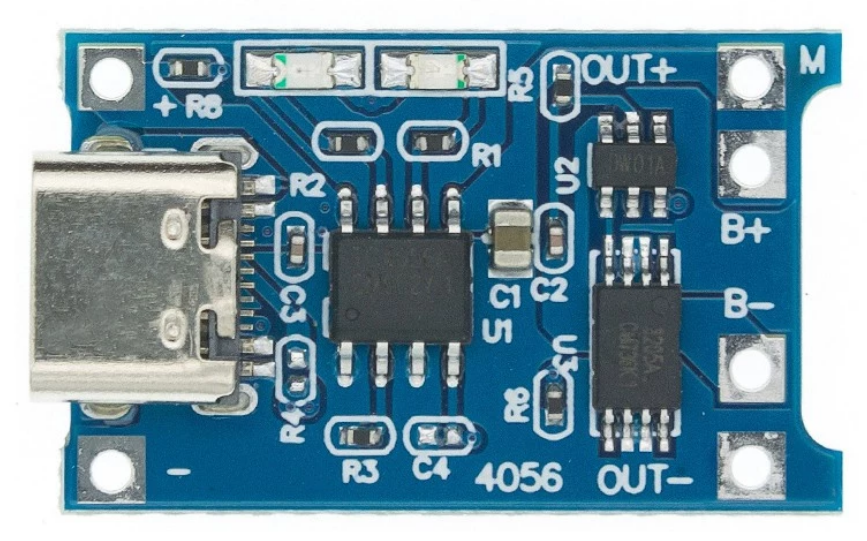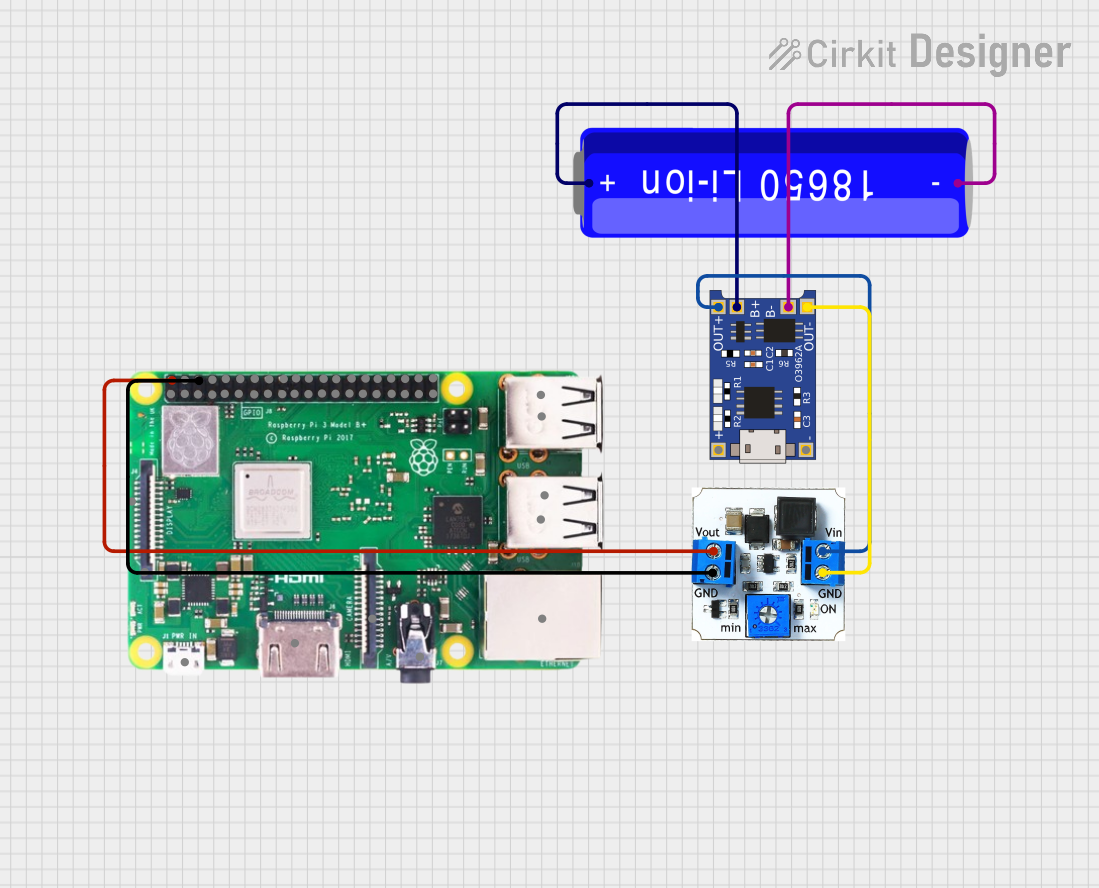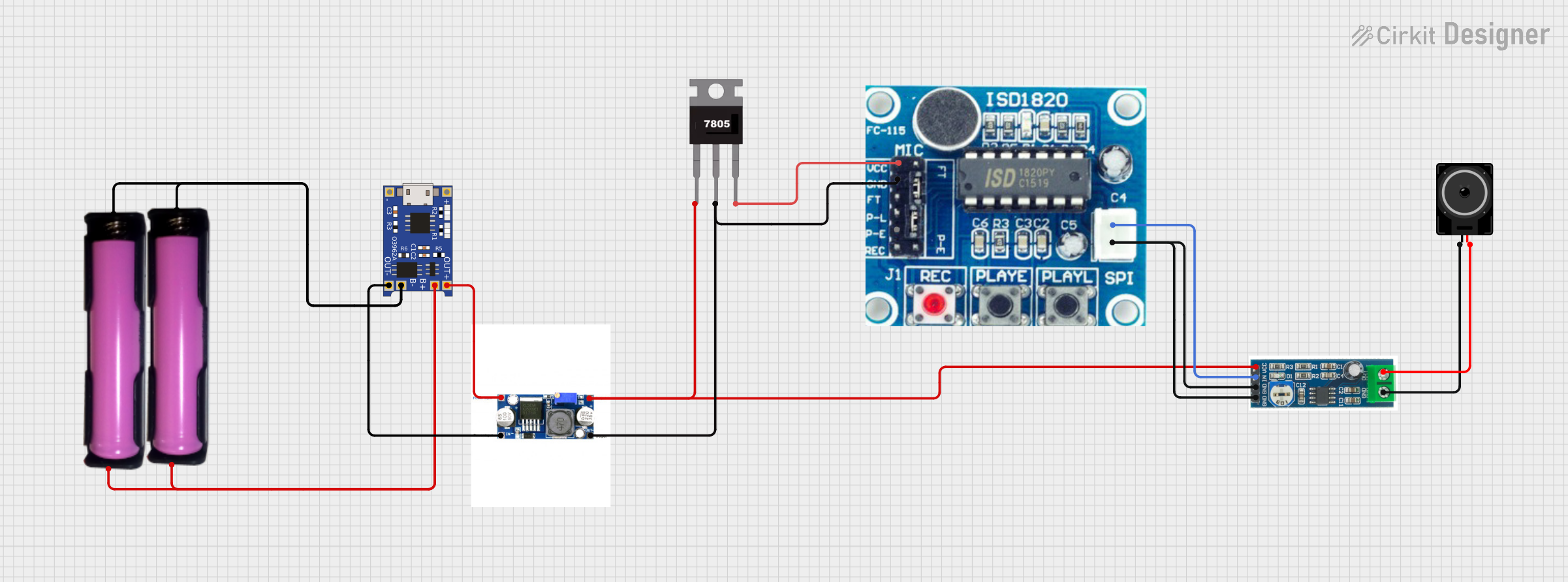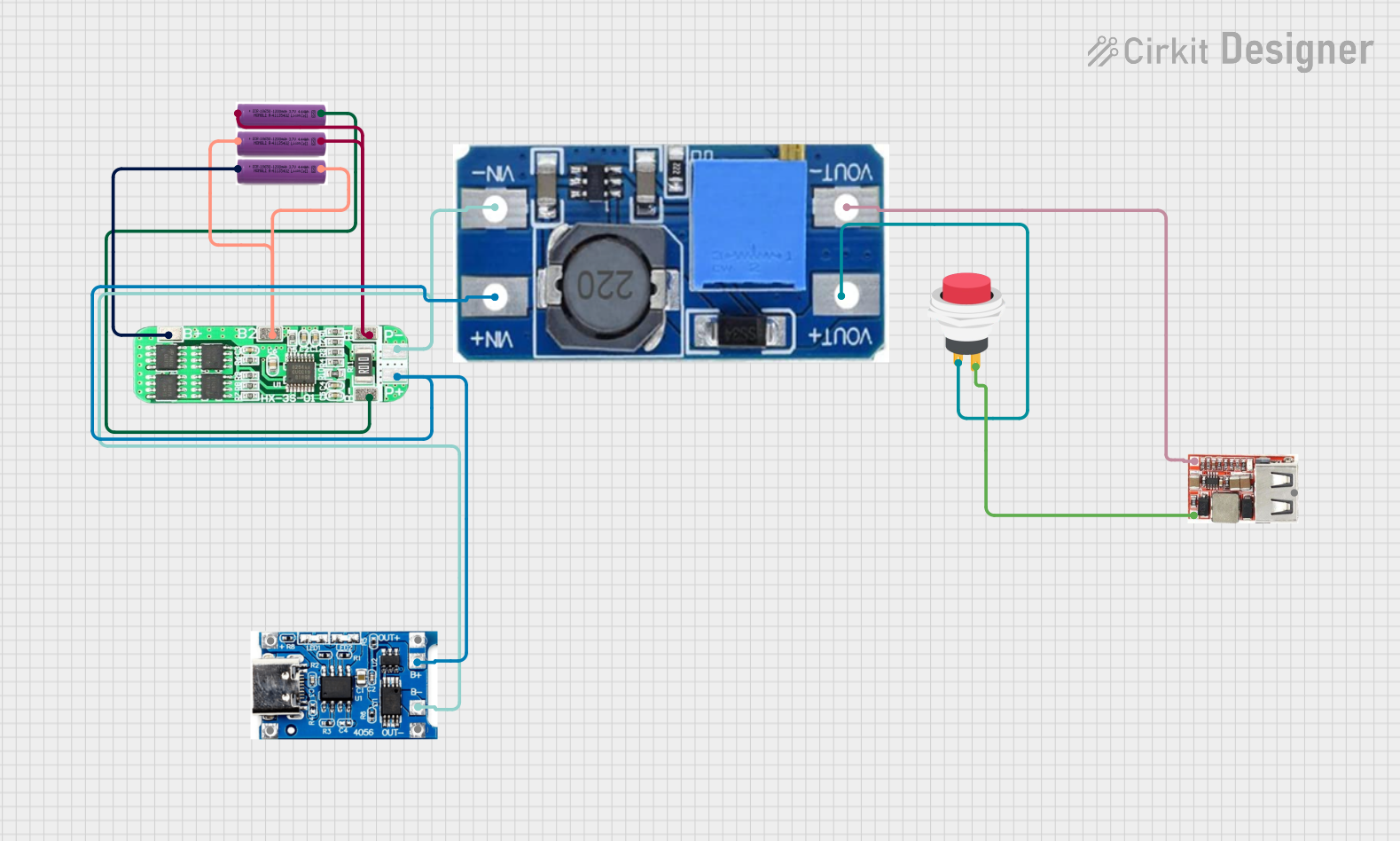
How to Use TP4056 - USB-C 5V 1A 18650: Examples, Pinouts, and Specs

 Design with TP4056 - USB-C 5V 1A 18650 in Cirkit Designer
Design with TP4056 - USB-C 5V 1A 18650 in Cirkit DesignerIntroduction
The TP4056 is a lithium battery charger module specifically designed for charging 18650 lithium-ion batteries. It features a USB-C input for convenient power delivery and provides a constant current of 1A and a constant voltage of 4.2V, ensuring safe and efficient charging. This module is widely used in DIY electronics projects, portable power banks, and battery-powered devices.
Explore Projects Built with TP4056 - USB-C 5V 1A 18650

 Open Project in Cirkit Designer
Open Project in Cirkit Designer
 Open Project in Cirkit Designer
Open Project in Cirkit Designer
 Open Project in Cirkit Designer
Open Project in Cirkit Designer
 Open Project in Cirkit Designer
Open Project in Cirkit DesignerExplore Projects Built with TP4056 - USB-C 5V 1A 18650

 Open Project in Cirkit Designer
Open Project in Cirkit Designer
 Open Project in Cirkit Designer
Open Project in Cirkit Designer
 Open Project in Cirkit Designer
Open Project in Cirkit Designer
 Open Project in Cirkit Designer
Open Project in Cirkit DesignerCommon Applications and Use Cases
- Charging 18650 lithium-ion batteries in DIY projects
- Power banks and portable chargers
- Battery-powered IoT devices
- Solar-powered battery charging systems
- Backup power supplies for embedded systems
Technical Specifications
The TP4056 module is compact and efficient, with the following key specifications:
| Parameter | Value |
|---|---|
| Input Voltage | 4.5V to 5.5V (via USB-C) |
| Charging Current | 1A (default, adjustable with resistor) |
| Full Charge Voltage | 4.2V ± 1% |
| Battery Type | 18650 lithium-ion |
| Charging Method | Constant Current / Constant Voltage (CC/CV) |
| Operating Temperature | -10°C to +85°C |
| Dimensions | 25mm x 19mm x 10mm |
Pin Configuration and Descriptions
The TP4056 module has several pins and connectors for input, output, and monitoring:
| Pin/Connector | Description |
|---|---|
| USB-C Input | Connects to a 5V power source (e.g., USB adapter, power bank). |
| BAT+ | Positive terminal for the 18650 battery. |
| BAT- | Negative terminal for the 18650 battery. |
| OUT+ | Positive output terminal for powering external devices (optional). |
| OUT- | Negative output terminal for powering external devices (optional). |
| CHRG (LED) | Indicates charging status (Red = Charging, Off = Fully Charged). |
| STDBY (LED) | Indicates standby status (Blue = Fully Charged or No Battery Connected). |
Usage Instructions
How to Use the TP4056 in a Circuit
Connect the Power Source:
Plug a USB-C cable into the module's USB-C input. Ensure the power source provides a stable 5V supply.Connect the Battery:
- Connect the positive terminal of the 18650 battery to the
BAT+pin. - Connect the negative terminal of the battery to the
BAT-pin.
Ensure proper polarity to avoid damage to the module or battery.
- Connect the positive terminal of the 18650 battery to the
Optional Output Connection:
If you want to power an external device while charging the battery, connect the device to theOUT+andOUT-pins.Monitor Charging Status:
- The red LED (
CHRG) will light up during charging. - The blue LED (
STDBY) will light up when the battery is fully charged or no battery is connected.
- The red LED (
Important Considerations and Best Practices
- Battery Protection: Use a protected 18650 battery or add a separate protection circuit to prevent overcharging, over-discharging, and short circuits.
- Heat Management: The module may heat up during operation. Ensure proper ventilation or add a heatsink if necessary.
- Adjusting Charging Current: The default charging current is 1A. To adjust it, replace the onboard resistor (Rprog) with a different value. Refer to the TP4056 datasheet for resistor values corresponding to desired currents.
- Avoid Reverse Polarity: Always double-check connections to avoid damaging the module or battery.
Example: Using TP4056 with Arduino UNO
The TP4056 can be used to charge a battery that powers an Arduino UNO. Below is an example of monitoring the battery voltage using the Arduino:
// Example code to monitor battery voltage using Arduino UNO
const int batteryPin = A0; // Analog pin connected to BAT+ via a voltage divider
const float voltageDividerRatio = 2.0; // Adjust based on your resistor values
const float referenceVoltage = 5.0; // Arduino's reference voltage (5V for UNO)
void setup() {
Serial.begin(9600); // Initialize serial communication
pinMode(batteryPin, INPUT); // Set battery pin as input
}
void loop() {
int analogValue = analogRead(batteryPin); // Read analog value from BAT+
float batteryVoltage = (analogValue / 1023.0) * referenceVoltage * voltageDividerRatio;
// Print the battery voltage to the Serial Monitor
Serial.print("Battery Voltage: ");
Serial.print(batteryVoltage);
Serial.println(" V");
delay(1000); // Wait for 1 second before the next reading
}
Note: Use a voltage divider circuit to step down the battery voltage to a safe range for the Arduino's analog input (0-5V).
Troubleshooting and FAQs
Common Issues and Solutions
Module Overheating:
- Cause: High charging current or insufficient ventilation.
- Solution: Reduce the charging current by replacing the Rprog resistor or improve ventilation.
Battery Not Charging:
- Cause: Incorrect connections or damaged battery.
- Solution: Verify the polarity of the battery connections and check the battery's health.
LEDs Not Lighting Up:
- Cause: No power input or faulty module.
- Solution: Ensure the USB-C cable is properly connected and the power source is functional.
Output Voltage Too Low:
- Cause: Battery is deeply discharged or damaged.
- Solution: Allow the battery to charge for some time. If the issue persists, replace the battery.
FAQs
Q1: Can I use the TP4056 to charge batteries other than 18650?
A1: Yes, the TP4056 can charge other lithium-ion or lithium-polymer batteries with a nominal voltage of 3.7V and a full charge voltage of 4.2V. Ensure the battery's capacity and charging current are compatible.
Q2: Can I power a device directly from the TP4056 while charging the battery?
A2: Yes, but ensure the device's current draw does not exceed the module's output capacity. For high-power devices, use a separate power management circuit.
Q3: How do I adjust the charging current?
A3: Replace the onboard Rprog resistor with a different value. Refer to the TP4056 datasheet for the resistor-to-current mapping.
Q4: Is the TP4056 safe for unattended charging?
A4: While the TP4056 has built-in safety features, it is recommended to use a protected battery and monitor the charging process for added safety.